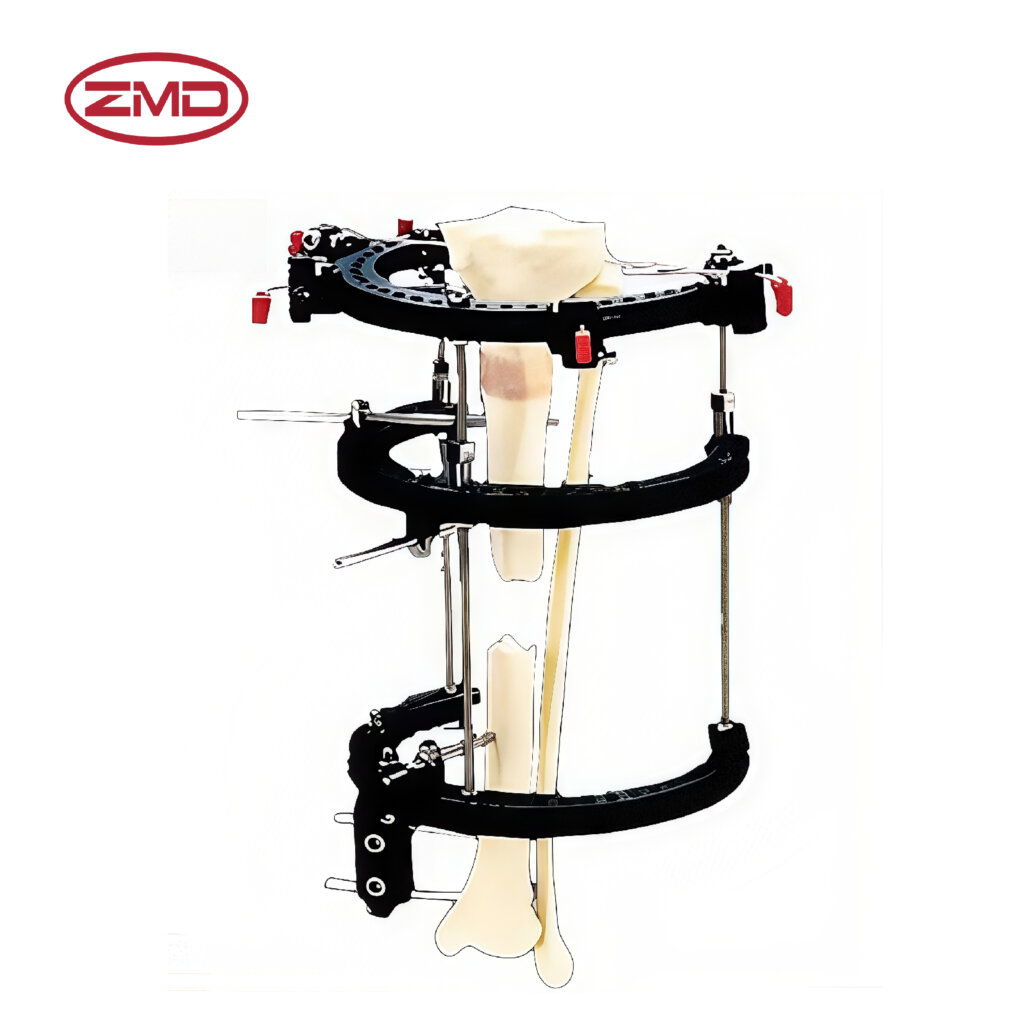
- Home
- About Us
- Products
- Trauma Internal Fixation System
- Spinal Internal Fixation System
- External Fixation
- Artificial Implants System
- Sports Medicine
- Power tools
- VSD System
- Instruments
- Medical supplies
- Blog
- Personnel Profile
- Contact Us
Phone line
| CODE | PRODUCTION | DESCRIPTION | MATERIAL |
| ZG106 | Pelvic Fixator Supplementary Link | / | Aluminum |
A: It's typically made of medical - grade materials. These materials are chosen for their durability, ensuring that the link can hold up under the mechanical stresses during the healing process. Additionally, they are biocompatible, meaning they won't cause adverse reactions within the body, which is crucial as it remains in contact with the patient's tissues for an extended period during treatment.
A: It enhances pelvic fixation by providing additional stability and support. When attached to the existing pelvic fixator, it helps distribute forces more evenly across the pelvic structure. This reduces the risk of excessive movement or misalignment of the pelvis, creating a more stable environment for the bones to heal properly after an injury.
A: It's designed to be user - friendly for medical professionals. They have the necessary knowledge and skills to position and attach it correctly to the pelvic fixator during the surgical procedure. The design takes into account ease of use to ensure that the installation process is as straightforward as possible without sacrificing its effectiveness.
A: Some models may have adjustable features. These adjustments allow medical professionals to customize the link based on the specific needs of the patient and the characteristics of the pelvic injury. For example, it might be possible to modify the tightness or the angle of attachment to optimize the stability it provides
A: It may be available in various sizes to fit different fixators. Different pelvic fixation systems have varying dimensions and requirements, and having multiple size options ensures that the supplementary link can integrate properly with a wide range of setups, maximizing its usability in different clinical situations.
A: It's made to withstand the healing process. The materials and construction are engineered to endure the forces exerted on it while the pelvis is healing. This durability is essential as it needs to maintain its integrity and continue providing support throughout the entire treatment period.
A: Removal is usually done by a medical professional. They have the expertise to safely take it out without causing harm to the patient or the healed pelvic tissues. The removal process follows specific medical procedures based on the design and attachment method of the link.
A: It's used in pelvic fixation surgeries. Specifically, it's incorporated into the surgical plan when dealing with complex pelvic fractures, osteoporosis-related pelvic injuries, during revision surgeries, or when additional support is needed based on the patient's individual circumstances and activity level.
A: It's designed to minimize discomfort while providing support. The materials and the way it's positioned are carefully considered to reduce any pressure points or irritation for the patient. Although having a foreign object in the body can cause some awareness, efforts are made to keep the patient as comfortable as possible during the treatment.
A: Some training may be beneficial for proper application. While the device is designed to be relatively intuitive for medical professionals, training helps ensure accurate placement, correct adjustment (if applicable), and an understanding of how to monitor the patient's progress while the supplementary link is in use. This training can enhance the overall effectiveness of using the link in pelvic fixation procedures
Oh yeah! I have to mention their payment options and discount offers, which are awesome! Those payment methods are as flexible as moving water and can be chosen freely according to our cash flow situation. And the frequent discounts, like a timely rain, have been moisturizing our financial statements time and again, and have had a rocket-like positive impact on our profits! With ZMD, I feel relaxed and at ease when it comes to purchasing!
Send us a message if you have any questions or request a quote. Our experts will give you a reply within 24 hours and help you select the right valve you want.
Book Now
If you are looking for professional orthopedic medical product solutions, don’t hesitate to contact us now!

We are an integrated manufacturer specializing in orthopedic medical industry, providing high quality and reliable orthopedic medical products to customers worldwide.
Copyright © 2024 ASK Project